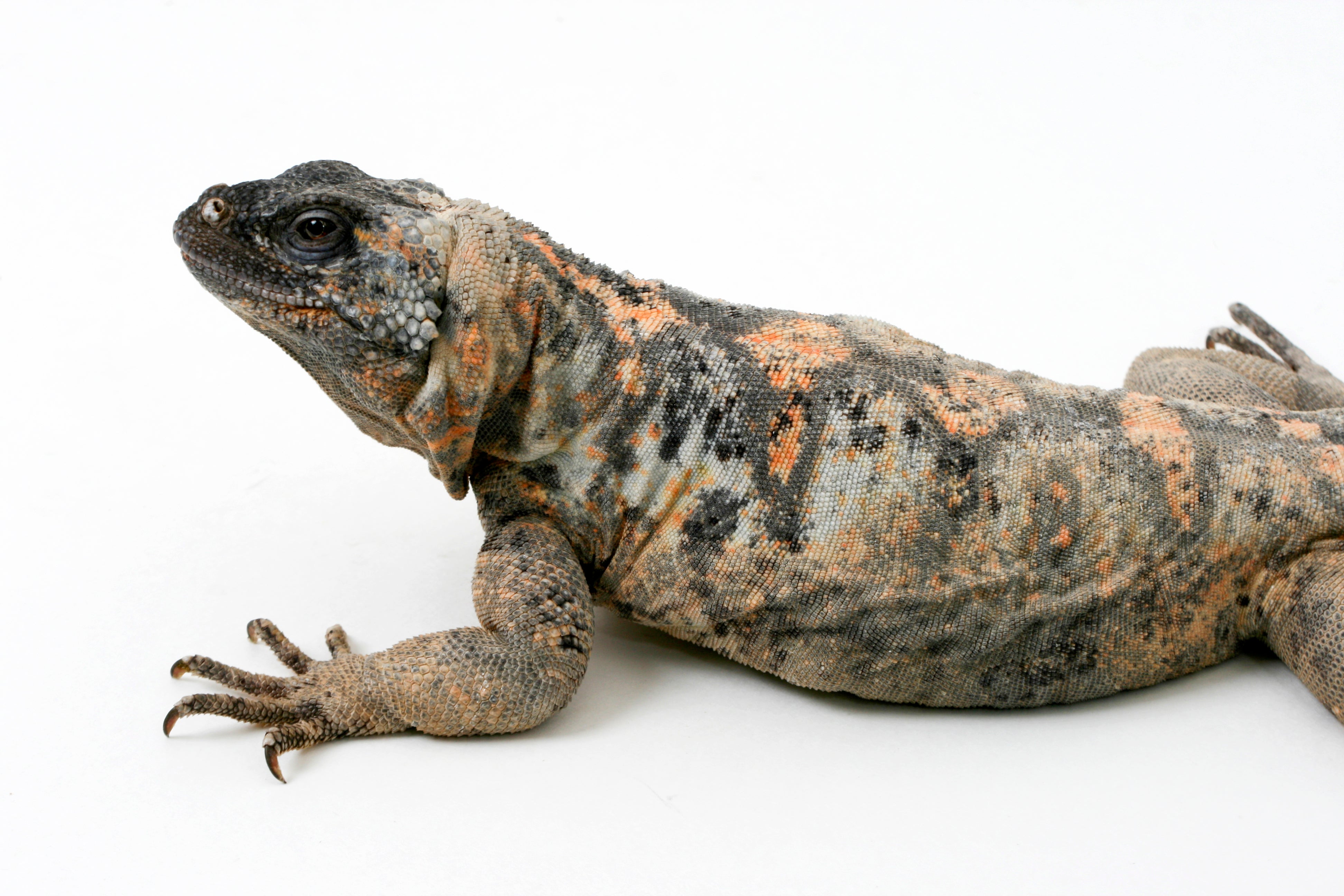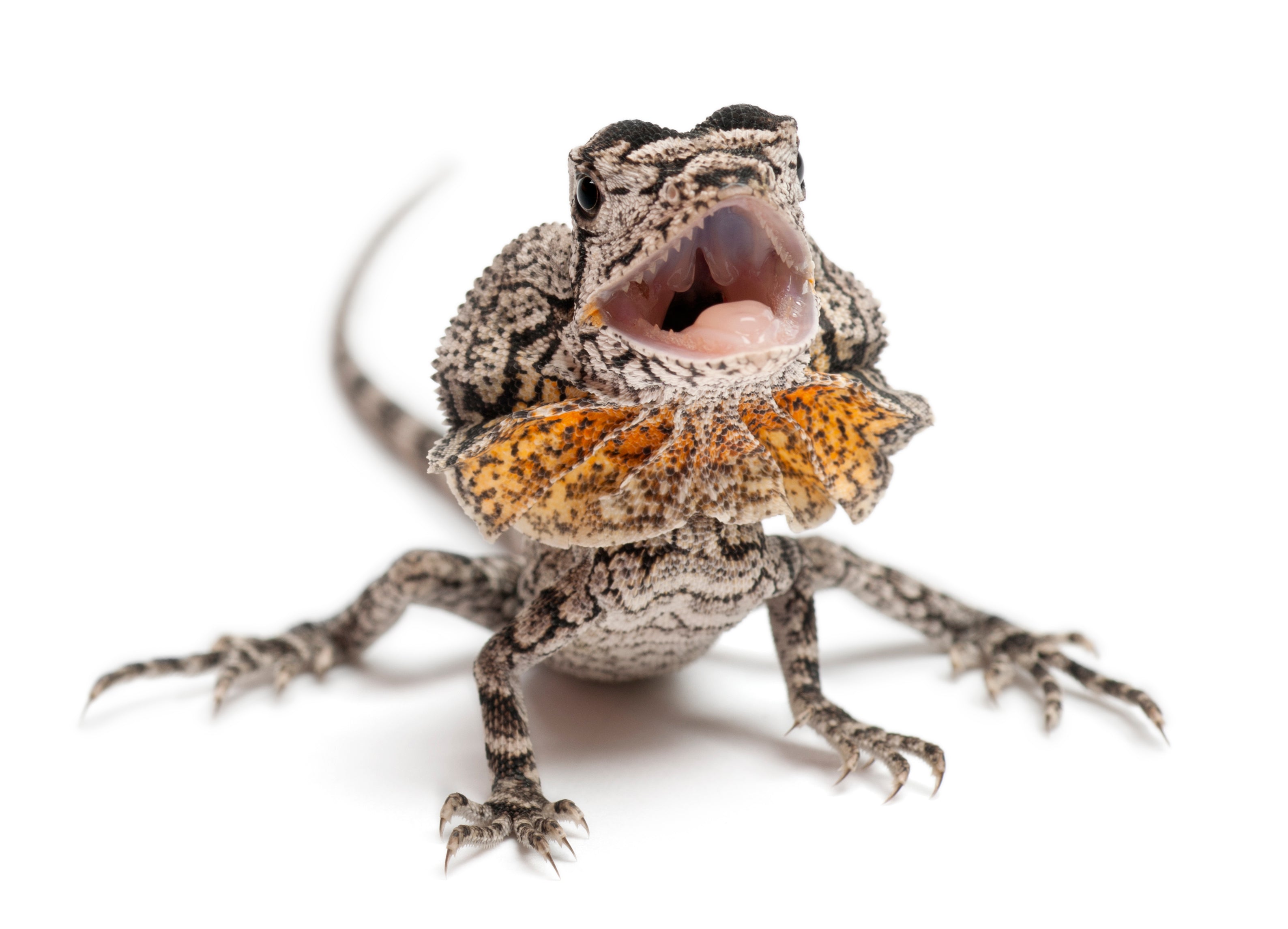Sudan plated lizards (Broadleysaurus major) are medium-sized, diurnal, terrestrial reptiles native to eastern and central Africa. Their habitat is generally considered to be arid savannah, though the environment does undergo brief rainy seasons twice a year. They are frequently found in and around hills, termite mounds, and rock piles.
Sudan plated lizards are typically between 18-24” long, with a blunt head, elongated body, and stout limbs. They are generally either tan or beige with minimal pattern, or brown/black with yellow pinstriping. They have densely arranged, heavily keeled scales, earning them the name “rough-scaled plated lizard.”
Sudan plated lizards tend to be shy and skittish, and generally prefer to be left alone. They can be tamed with patience, but they are not a good pet for someone that wants a lizard they can hold often. With good care they can live 15-20 years.
How much space do Sudan plated lizards need?
A single Sudan plated lizard should be housed in no smaller than a 48”L x 24”W x 24”H enclosure. This species is very active and quick, so even more space is likely to be used regularly.
Cohabitation (keeping multiple plated lizards in the same terrarium) is not recommended, as they do not appear to be a social species that would benefit from the company.
Do Sudan plated lizards need UVB?
Yes!
Sudan plated lizards require UVB lighting to stay healthy in captivity. They are a diurnal species often observed basking in the morning. The best UVB bulbs for a Sudan plated lizard housed in a 48” x 24” x 24” enclosure are:
If the UVB is mounted over mesh, place the basking area 10-12” below the lamp. If the UVB is mounted inside the enclosure, place the basking area 14-16” below the lamp. The basking area should be the closest surface to the UVB bulb.
The UVB bulb should be housed in a reflective T5 HO fixture like the Arcadia ProT5 or Vivarium Electronics, and placed on the basking side along with the heat lamp. Note that UVB is blocked by glass and plastic, so you can’t give your lizard UVB by placing its terrarium in front of an open window. Also make sure that the fixture your UVB bulb is in does not have a clear plastic bulb cover.
In addition to UVB, since Sudan plated lizards are day-active, it’s beneficial to provide an additional daylight-spectrum lamp to make sure the enclosure is brightly illuminated. Use a strong 6500K LED or T5 HO fluorescent plant grow light for best results.
Lights should be on for 12 hours/day.
What basking temperatures do Sudan plated lizards need?
Sudan plated lizards should have a basking surface temperature of 105-110°F, with a cool side temperature of 75-80°F. Nighttime temps can drop as low as 60°F. Measure your temperatures with a digital probe thermometer with the probe placed on the desired surface.
Provide heat for your Sudan plated lizard by imitating the sun with a halogen heat lamp placed on one side of the enclosure. Do not use ceramic heat emitters (CHEs), heat mats, red bulbs, or blue bulbs, as these are not as effective. For best results, the basking surface itself should be a flat stone.
What humidity levels do Sudan plated lizards need?
Plated lizards need dry air and access to a humid burrow or hideout, creating a humidity gradient of 20-80%. Misting your lizard’s enclosure with a sprayer and pouring water into the substrate as needed will help create the right humidity levels for your Sudan plated lizard.
Monitor humidity levels with at least two digital probe hydrometers: one for the air and one for the burrow.
What substrate is good for Sudan plated lizards?
Sudan plated lizards enjoy burrowing, so it’s a good idea to provide a thick layer of substrate to help accommodate this instinct. Substrate also helps maintain healthy humidity levels and contributes to the enclosure’s overall attractiveness.
We recommend the following substrates for Sudan plated lizards:
Substrate should be at least 4” deep and completely replaced every 3-4 months. Remove poop and urates daily, along with contaminated substrate.
What décor can you use in a Sudan plated lizard terrarium?
It’s terribly boring for a Sudan plated lizard to be stuck in an enclosure with nothing in it except substrate and food/water bowls. It doesn’t matter how big the enclosure is if you don’t put things in it for your pet to use and interact with!
Sudan plated lizards tend to appreciate a fairly cluttered enclosure that gives them plenty of things to hide in. Here are some ideas for ways to create the perfect setup for your pet:
- cork tubes
- cork flats
- branches
- large vines
- ledges
- live or artificial plants
- additional hides
- rock stacks
- textured background
What do Sudan plated lizards eat?
Sudan plated lizards are primarily insectivorous, which means that they need to eat insects (preferably live) in order to get the nutrition that their bodies need. However, they are known to eat some vegetation as well — especially fruit.
How often and how much they need to eat depends on age:
- Hatchlings (<6” long) — Insects daily, plants daily
- Juveniles (6-12” long) — Insects 5 days/week, plants daily
- Young adults (12-18” long) — Insects 3 days/week, plants 4 days/week
- Adults (>18” long)— Insects 2 days/week, plants 4 days/week, no food 1 day/week
Feeder insects for Sudan plated lizards: dubia roaches, discoid roaches, red runner roaches, crickets, black soldier fly larvae, small hornworms, mealworms, mealworm beetles, superworms
Vegetables for Sudan plated lizards: collard greens, cactus pads, spring mix, arugula, kale, pea shoots, alfalfa, bok choy, carrot greens, spinach, dandelion greens/flowers, hibiscus leaves/flowers
Fruits for Sudan plated lizards: berries, figs, apples, prickly pear, papaya, and mango.
Supplements
You will need calcium and vitamin supplements to help prevent your lizard from developing a deficiency. We recommend Repashy Calcium Plus LoD, lightly dusted on all of your lizard’s feeder insects. It’s okay to skip a dusting every once in a while.
Water
Provide a medium to large water bowl where your lizard can always get a drink when needed. Change the water daily and scrub the bowl with a reptile-safe disinfectant weekly, or whenever it becomes soiled.
Do Sudan plated lizards like to be handled?
Few reptiles actually “like” to be held, and Sudan plated lizards are generally not one of them. However, they can be tamed with patience. Start teaching it to trust you by hand-feeding it with a pair of feeding tweezers.
*This care sheet contains only very basic information. Although it’s a good introduction, please do further research with high-quality sources to obtain additional information on caring for this species. Here are some more sources we recommend checking out:
- The ReptiFiles Sudan Plated Lizard Care Guide
- Sudan Plated Lizard / Great Plated Lizard (Gerrhosaurus Major)
- iNaturalist: Broadleysaurus major observations




Leave a comment
This site is protected by hCaptcha and the hCaptcha Privacy Policy and Terms of Service apply.